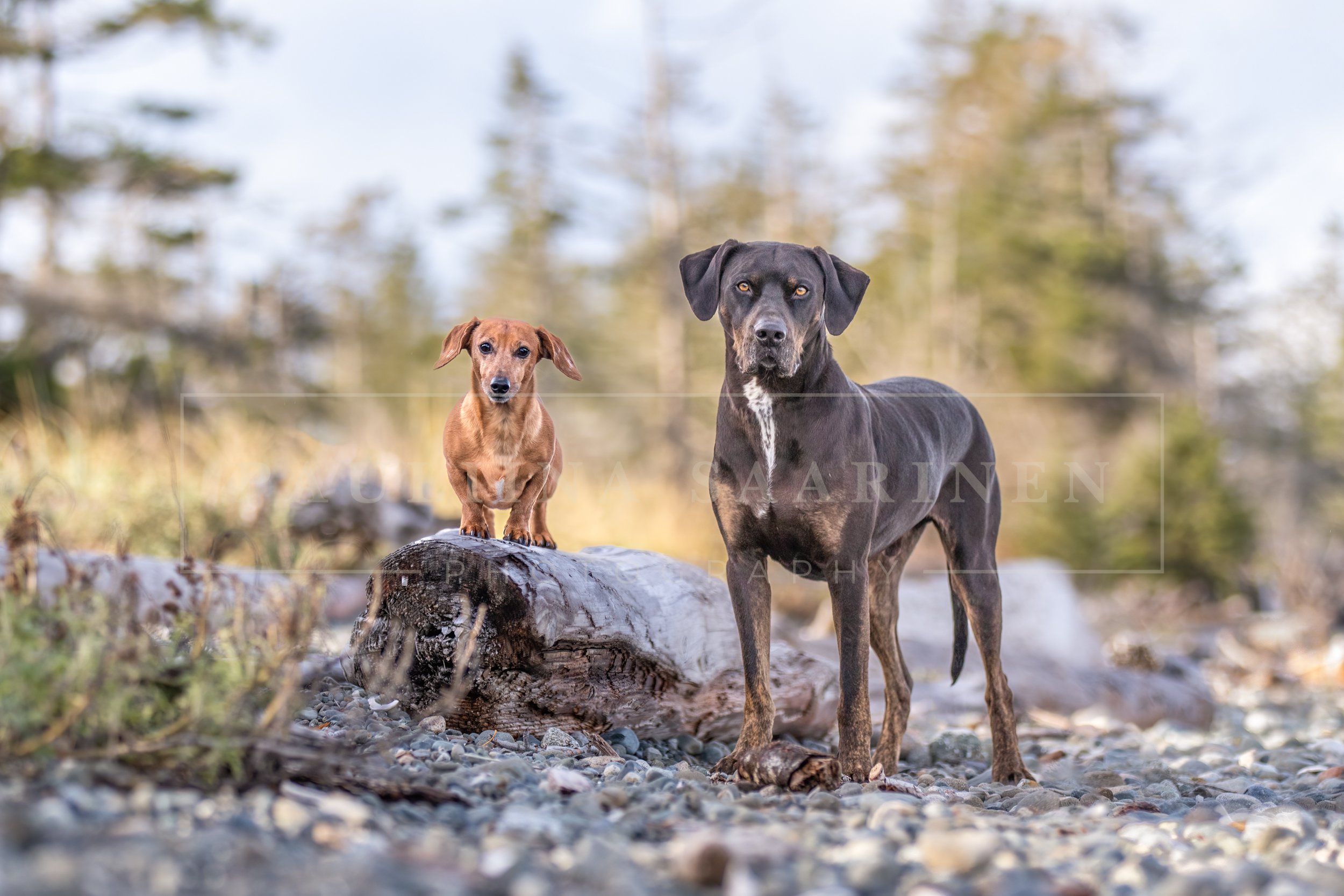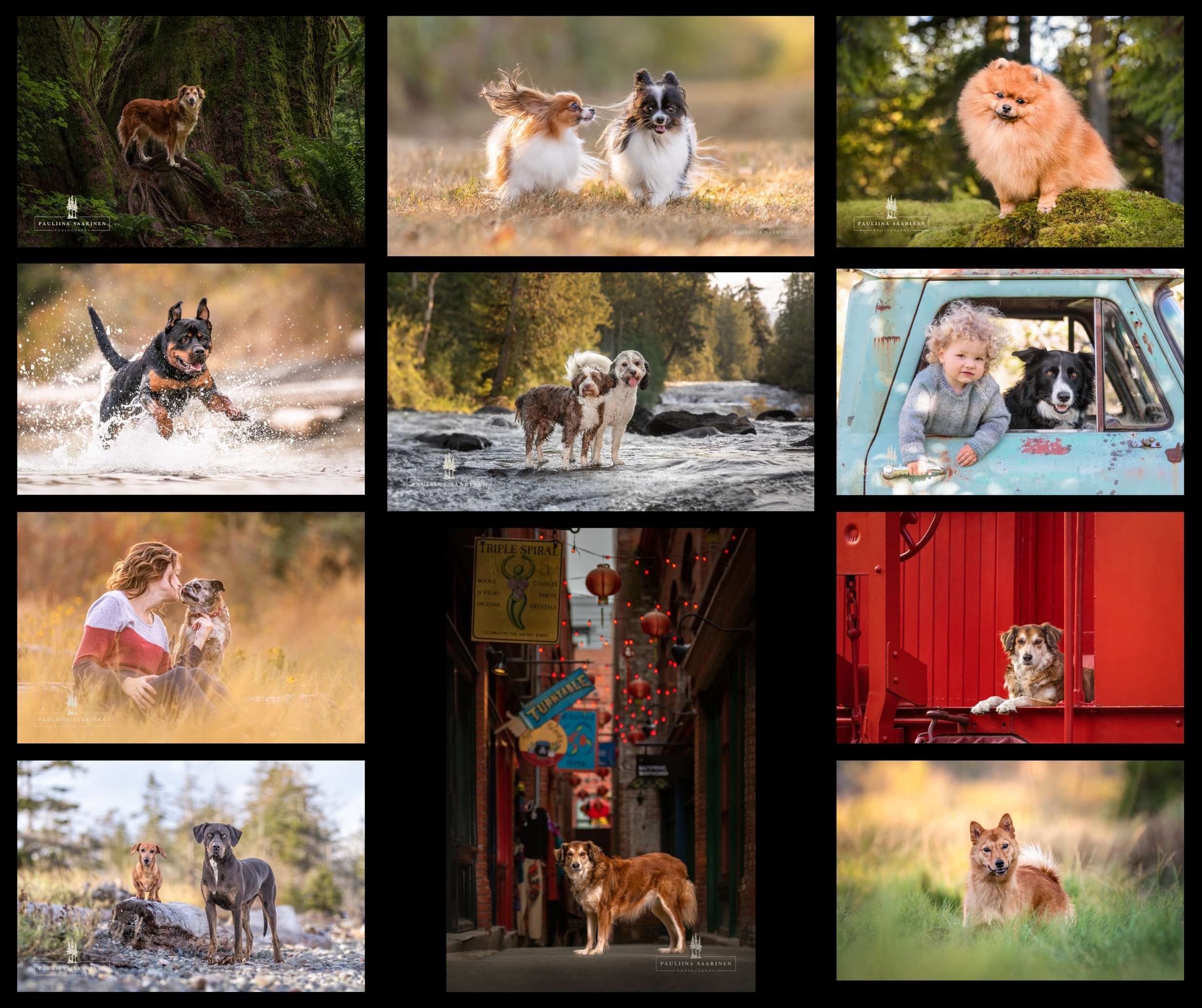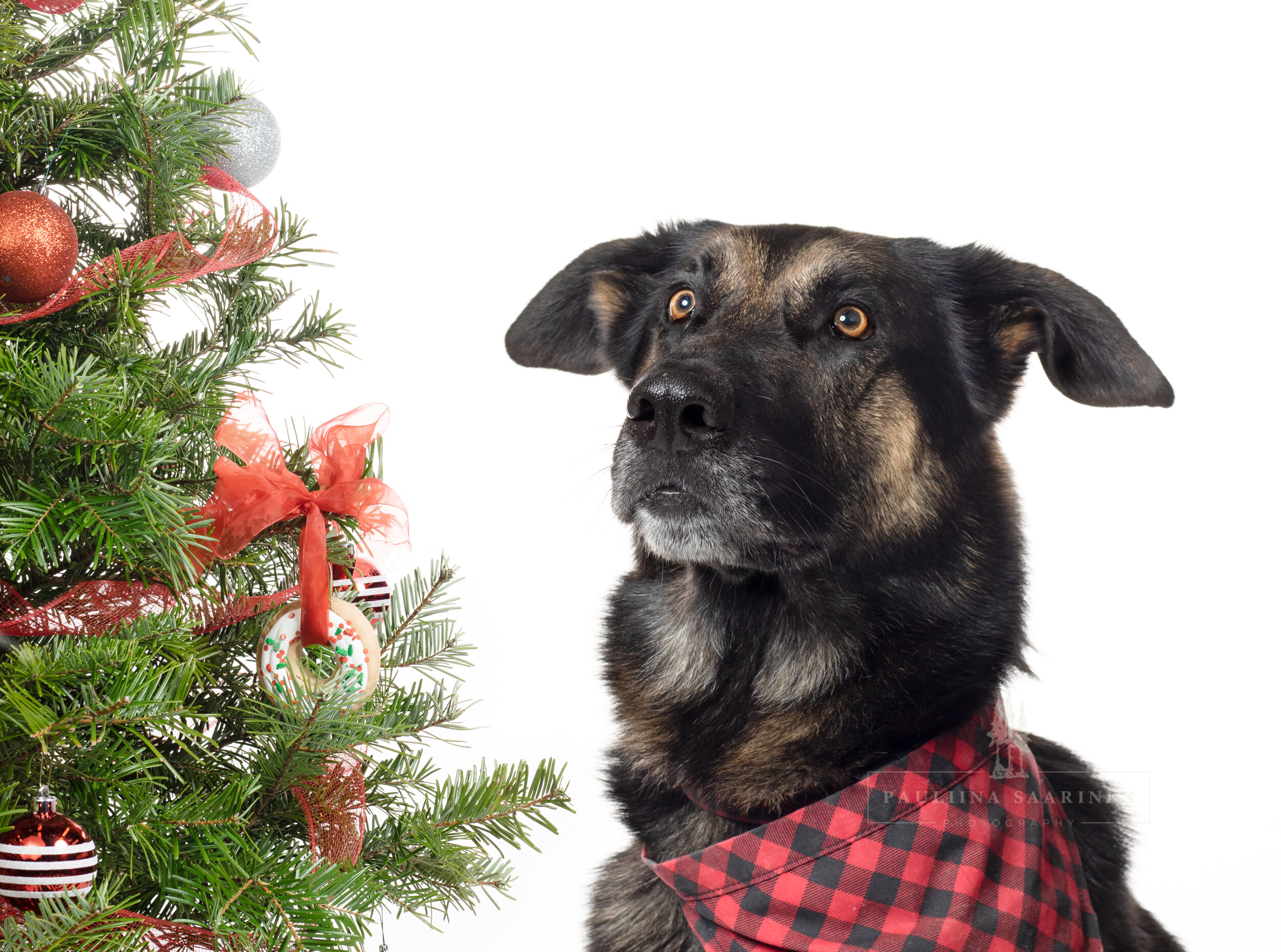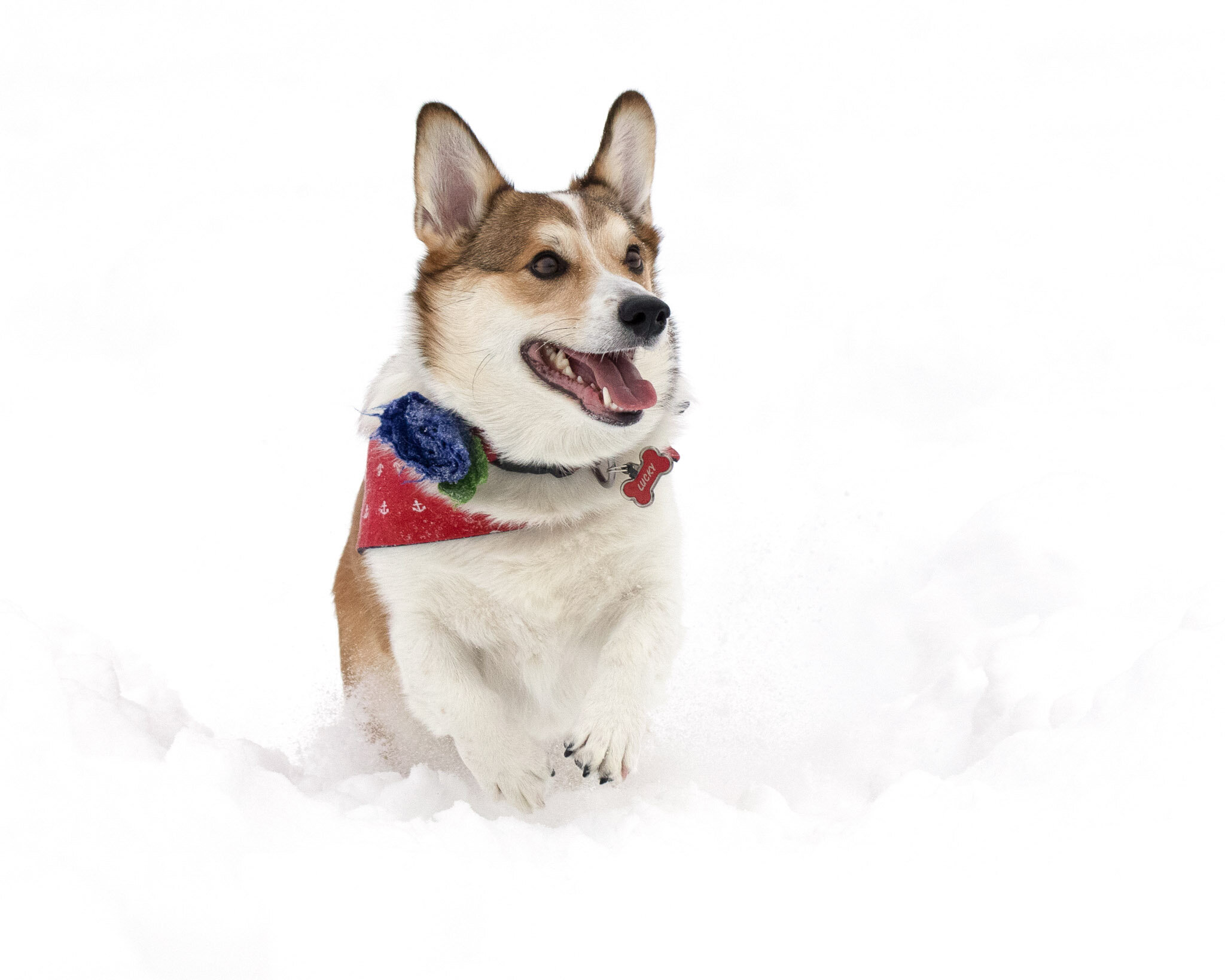Best practices for hanging artwork
Hang wall art 6-12 inches above furniture. The art photograph by Pauliina Saarinen Photography.
Your beautiful wall art has arrived and is ready to be hung on the wall. Making holes in walls can be nerve-wracking, especially if you aren’t quite sure where to put those holes. I have listed a few rules that you can follow to add a pleasing focal point to your room.
Preparations
Get your tools ready before you start. You need:
Tape measure
Painter’s tape
Roll of paper for templates
24” level
Hooks
Begin by tracing your frames on a roll of paper and cut out templates for each frame.
Using your paper templates, try different layouts by taping them on the wall. When working out the layout, keep these interior designer’s principles in mind:
The Eye Level Rule
If placed on an empty wall with no furniture in front, the art piece should be placed so that the center of the piece is at eye level, which is about 57-60 inches from the floor. Follow the steps below to hang your art at eye level.
Measure from the top edge of the frame to the hook or the wire pulled up so that there’s no slack. This is the “Hardware height” measurement.
To determine the height of the center point, measure the height of the art piece and divide by 2.
Subtract the “hardware height” measurement from the halved frame height.
Add 57”-60”, depending on ideal eye height for you. The sum is the final height at which the hangers should be placed on the wall. Don’t forget to measure from the floor.
Breathing space
When hanging artwork above the sofa, mantel, bed or other furniture, you want space around the art piece so that it can breathe and not look crammed. A good rule of thumb is to place the bottom of the frame 6-8 or even up to 12 inches above the top of the feature. In these cases it’s acceptable to break the Eye Level Rule. Experiment with your paper template to see which height looks good in your room.
The ideal size of the art piece relative to furniture is between 2/3 to 3/4 of the width of the furniture. Art image by Pauliina Saarinen Photography.
Size matters
A big print will create a beautiful focal point in a room with a lot of wall space. The ideal size of the wall art piece relative to furniture is between 2/3 to 3/4 of the width of the furniture. You can also use two pieces of large wall art that together measure about two-thirds the length of the furniture.
The more the better
Your wall art should cover 60 - 75% of the available wall space, i.e wall space that isn’t covered by furniture or moldings. To calculate the coverage that suits your space, begin by measuring the width and height of your wall and then multiply both dimensions by 0.60 or 0.75. This is the space you have to work with. It can be filled with a single or multiple art pieces. A cluster of smaller pieces will create an eye-catching gallery wall.
Leave 2-6 inches between frames in a grouping. Art images by Pauliina Saarinen Photography.
Gallery wall Tips
A gallery wall can fill any size wall space. It can have a unified look, or it can consist of prints with different frames, mediums, finishes, colour themes and include both matted and full frame images. Below are a few gallery wall tips.
Leave a 2-6” space between frames.
If you have a focal piece, don’t be afraid to place it off centre. Experiment what it would look like if placed off centre or in the middle. Go with what suits your space and taste.
Add to it. Your gallery wall can evolve and change with your life.
Finally, to keep your art looking great for a long time,
Avoid hanging artwork directly above or below heat sources.
Hang your art on walls that don’t get direct sunlight.
By following these tips, you’ll create a balanced and eye catching display to your room for every day enjoyment. If you have any questions, you can leave me a comment below.
When Woof ate a bag of chocolate shavings...
KEEP YOUR PETS SAFE DURING THE HOLIDAYS
Woof’n Sheep’s Clothin’ , Woof for short, was one of the five Bedlington Terriers that I have owned over the years. How I wish that I had better images of him! This is a great reminder for everyone to have their pets professionally photographed. Cell phone snapshots just aren’t good enough. Forgive my shameless self-promotion!
The bag of Callebaut chocolate shavings intended as a Christmas present for my friend was licked clean right to the bottom. The offender was easy to spot; my Bedlington terrier Woof had a chocolatey muzzle up to his eyes. Woof, a true food connoisseur, had found the shavings in one of the bags. Oh my, what a horrible mistake on my part to leave the shopping in the car with the dogs unsupervised… (the story continues below)
It’s hard to foresee all the possible ways our animals, puppies and kittens in particular, can get into trouble. During the prep for holidays, everyone is busy and mistakes happen, which can prove to be very serious, even fatal in some cases. Here’s a list of common dangers that might lurk at home during the holiday season.
FOODS TOXIC TO DOGS
Alcohol - intoxication, lack of coordination, trouble breathing, abnormal acidity, potentially coma, death
Apple seeds - release cyanide when digested
Cooked bones - splinter easily when chewed causing damage to the gut, even perforation. Blockage is also possible due to large enough bone pieces
Candy and chewing gum - often contains xylitol which can cause release of insulin, kidney failure, even death
Chocolate - toxicity causing panting, vomiting, diarrhea, damage to heart and nervous system
Coffee - potential death in dangerous quantities
Raw salmon and trout - can be fatal if the fish is infected with a certain parasite
Garlic, chives and other onions, onion powder - often in human foods, such as packaged meat products and baby foods. Causes anemia and damage to red blood cells
Grapes and raisins - contain a toxin that can cause liver damage and kidney failure
Hops (in beer) - panting, increased heart rate, fever, seizures, even death
Macademia nuts - contains a toxin causing weakness, panting, swollen limbs and tremors and possible damage to the digestive, nervous and muscle systems
Marijuana and cannabis-infused edibles - very attractive to dogs and can affect the nervous system and heart rate as well as cause seizures, coma and even death
Shelled nuts - may cause blockage
Persimmons, peaches and plums - their pits are a choking hazard and seeds can be toxic
Tobacco - nicotine damages the digestive and nervous systems, increases heart rate, loss of consciousness and ultimately cause death
Yeast - on its own or in dough causing gas and discomfort. Too much of it could rupture the stomach and intestines
FOODS TOXIC TO CATS
Alcohol - intoxication, lack of coordination, trouble breathing, abnormal acidity, even coma or death
Chocolate - toxicity causes arrhythmia, muscle tremors and seizures
Coffee, tea, energy drinks - restlessness, rapid breathing, heart palpitations, muscles tremors
Canned tuna for humans - often packed in brine (excess salt) or oil
Milk, cheese and other dairy products - cats don't tolerate dairy products very well and can become lactose intolerant. Affected cats can vomit and have diarrhea.
Meat products for humans - often contain onion powder which can cause anemia and damage to red blood cells
If you suspect that your pet has ingested something toxic, call your veterinarian or emergency clinic immediately. Time of starting treatment is essential and can make a difference between life and death.
PLANTS TO WATCH OUT FOR
Holiday plants such as mistletoe, holly, snowdrops, lilies and amaryllis plants are bad news for pets. Contrary to popular belief, poinsettias are not poisonous to pets or people but can cause vomiting and irritations in the mouth and stomach when eaten.
CHRISTMAS ORNAMENTS AND TREES
Decorated Christmas trees in the house are sure to perk the interest of curious cats and dogs. Keep these tips in mind when decking the halls for Christmas.
Chewing of Christmas tree branches can cause stomach upsets and irritations in the mouth.
The water in the reservoir under the tree contains fertilizers and should not be ingested.
Decorative pine cones can be a choking hazard for pets.
Ensure the tree is well-secured and choose ornaments that don’t break and have loose parts that pets can swallow.
Use string instead of hooks to hang ornaments.
Avoid decorating with tinsel or angel hair as they can end up in pets’ stomach and intestines potentially causing various issues.
Hide cords for lights to make them inaccessible to pets who like to chew things.
NEW YEARS’ CELEBRATIONS
Fireworks, fun for us but a nightmare for animals. Prepare for the night in advance to keep your frightened pets safe during the celebrations.
Talk to your vet about options to calm your pet's frayed nerves.
Talk to your neighbours and ask for advance notice of fireworks. This will give you time to get your pets indoors.
If outside, keep your pet leashed or, even better, harnessed. Make sure your pet can’t pull its head through the collar.
Make sure your pet carries tags with current infomation AND has a registered microchip or tattoo. Register your pet with the BC Pet Registry which is traceable internationally via the American Animal Hospital Association’s pet microchip lookup.
Going back to Woof’s chocolate feast
Luckily for us, we were at the vet’s office within minutes. It was a simple numbers game; we knew exactly what chocolate (it was milk chocolate) and how much he ate, and we also knew his weight. A quick calculation by the vet revealed that he would be fine, perhaps a bit hyper and nauseous for a time. There was no need for stomach pumping. It would have been a different story, had he eaten that quantity of dark chocolate. Lesson learned!
Have a safe holiday with your furry family!
11 favourite images from 2022
I selected 11 favourite images from 2022, all taken in the great outdoors on Vancouver Island.
Vancouver Island Victoria BC pet photographer_Pauliina Saarinen Photography
Last year was a great photography year for me! I had fantastic client session with the pleasure of photographing both dogs and dog people. I also had a great time photographing our own Frisky. I practice with Frisky so that I can incorporate new ideas, locations and techniques into my client work if they work out. If they don’t, I only disappoint myself.
Looking through the images I took in 2022, I selected not 10 but 11 images as my favourites.
A Pomeranian tilting his head to the camera.
Sid, the Pomeranian
Can anything be cuter than a fluffy pom sitting on soft green moss, tilting his head to the camera? I think not. Blurry conifers on the background contributes to the soft feeling in the image.
A dog photographed in Fan Tan Alley in Victoria BC Chinatown.
Frisky at Fan Tan Alley in Victoria
I call this image “On the heels of an alley cat”. It is a vertical panorama, put together from four or five different images to make justice to the tall and narrow alley. The signs, lights and lanterns high up create visual interest in the image. Shooting there was a challenge with people coming and going but perseverance paid off.
I submitted this image to the Professional Photographers of America IPC competition but for some reason the image showed sideways. I must have saved it sideways… Argh! The judge said, “My heart is aching for you. Please send it again.” So, that's what I plan to do this year.
A toddler with his dog at Merridale Cidery in Cobble Hill.
A toddler and his dog
The old blue truck at the Merridale Cidery in Cobble Hill was a perfect attraction for this toddler, keeping him entertained long enough to capture him and his dog in one image - a rare moment indeed! This adorable child was a superstar and didn’t shed a tear during the two plus hour shoot.
A pair of Bernie-doodles photographed at a river in Comox Valley.
Cooper and Scout
I love what nature has to offer on Vancouver Island, and needless to say, I try to incorporate the scenery in my dog photographs to create “dogscapes” if I can. To create this image, I had the owner of the dogs stand knee deep in the river, keeping the dogs on this rock shelf while water flowed between their feet. I appreciate it very much when owners are “all in”, humouring me while I try to create what I visualize. I’ve noticed time and time again that good photographs take a lot of effort; great photographs require even more effort. But, the end result makes it all worthwhile.
A Finnish Spitz bred by Kinsol Kennels in Duncan BC.
Kova, the Finnish Spitz
What a thrill to photograph a dog breed that I know well from my home country, Finland. The Finnish Spitz is considered to be a Living National Heritage in Finland. These dogs descend directly from ages old hunting dogs without any crossbreeding, making them a rarity in the world of dog breeds for their purity.
Kova is a very pretty and a very clever dog. She figured out my crazy sounds in no time. I only had about two attempts with my crazy sound before she lost her interest in them but I managed to capture her looking quizzitively in the camera. Bingo!
A giant tree in Bright Angel Park in Duncan BC.
Frisky still with the giants
This pair of massive trees is in a nearby park where we walk almost daily. It’s pretty amazing that these trees weren’t logged like most big trees on Vancouver Island have been. There they continue to stand, right at the river’s edge and awe passers-by. When it was time to shoot for the Up Ups Challenge in the Embark course I did last year, I wanted to try capturing Frisky with these forest giants. Frisky got the idea and jumped in the fork of the trees, about a meter above the ground and waited until I had captured an image I liked. She even gave me the interested ears, a sign that she was into shooting that day, which is not always the case. I like how the light from the river behind wraps around the tree trunks and lights Frisky up from behind. The image was awarded a merit at PPA’s Int’l Photographic Competition, which made me very happy.
A young and powerful Rottweiler playing in a Great Blue Heron Park in Yellow Point, south of Nanaimo BC.
Powerful Bane, the Rottweiler
Bane is one of the winners in the Vancouver Island Dogs Calendar Contest, an annual fundraiser for Operation Freedom Paws Canada that I organize. I timed his calendar session at high tide after reading the high tide marks on the rocks. How cool would it be to have Bane stand alone on rock, surrounded by the sea, as if far away… Truthfully, we were only meters off the beach. But, when we arrived at the location, the rocks was completely submerged! I had failed to take the harvest tides, the highest tides we get, into account and scheduled the shoot too late. It was an epic FAIL! The images that I took on the beach did not make the cut that I impose on my images. I had no other choice but to reschedule the shoot at another location. The 2nd time around, I got a beautiful image of young and powerful Bane, playing in the water. He didn’t even know he was being photographed.
A tender moment shared with a senior dog and her owner.
May’s kiss
“I’d like you to capture a kiss”, May’s owner wrote on the questionnaire that I always send out to my clients before a session. I want to learn what’s important to them, and it guides my shooting for that client. I could sense her love for her senior dog; May means the world to her. I love the love in this image and the late summer vibe, the yellowed wispy grasses and the golden evening light that rims my subjects. This image reminds me why I am a pet photographer.
A pair of papillons at 40 Knots Winery and Estate Vineyard in Comox Valley on Vancouver Island.
Fizz and Lucy, the papillons
Every year, I organize Fall at 40 Knots sessions at 40 Knots Winery in Comox in October, just when the vines are in their fall splendour. The vineyard is all fenced so it’s a safe place to photograph dogs, and it gets beautiful light that time of year. This image of Fizz and Lucy is my absolute favourite from their session. Lucy couldn’t quite keep her excitement under control, and her twirling created opportunities for the cutest images possible. These darling little dogs were lit from behind by the late afternoon sun. Even the ground underneath their paws was glowing in golden light. I couldn’t have asked for better light!
A dog in a historic railway car in downtown Duncan BC.
The red railway car
The Embark course includes a challenge called Colourific. Little bit of colour wouldn’t satisfy the judges so I was on the hunt for a location that is VERY colourful. But, where to find one, when you really need one. The end of the course was looming, and I still hadn’t gotten the shot for this challenge. I was starting to get nervous and ready to settle for less until one day I “found” a historic railway car, painted in bold red and hiding in plain sight. I can’t count how many times I had seen it - or had I really? It’s the boldness of red that makes it one of my favourites - and of course, Frisky.
A dachshund and catahoula photographed at Salmon Point in Campbell River BC.
Rex the catahoula and Mason the duchshund
Vancouver Island beaches can be quite chaotic places with driftwood, branches, sticks and algae piled up high by the tides. Small dogs can get lost in the scene, and the distractions can take the viewer’s attention away from the subject. But prop little guys up on something and they stand out in stature like they do in character! Mason with the log is almost as tall as Rex - oh well, almost. The size difference between these beautiful brothers reminds me of the movie Twins, and I can’t help but smile!
I hope you enjoyed my images. I’m looking forward to what this year has in store. Please leave me comment below!
Pauliina Saarinen Photography is an award-winning professional photography studio for pets, dogs, cats and horses and families on Vancouver Island.
Frisky's favourite pumpkin treats
Christmas cookies for us people are still not made but Frisky’s Christmas treats are already done. That’s the order of business in our household! I want to share two of Frisky’s favourite pumpkin dog treat recipes for you to try out. These nutritious treats are easy to make and Frisky thinks they taste great! I don’t have a bone shaped cookie cutter but Frisky doesn’t seem to mind. Please leave us a comment below to let us know what your dog thinks of them. Merry Christmas from Frisky and Pauliina!
Homemade banana pumpkin dog treats_Pauliina Saarinen Photography
Peanut Butter Pumpkin Dog Treats
Ingredients
2 cups flour
1 cup canned pumpkin
1/2 cup peanut butter (make sure it is Xylitol-free)
Directions
Preheat your oven to 375°F
In a large bowl, mix together the pumpkin and peanut butter
Stir in the flour and combine the mixture into a dough
Roll out the dough onto a floured surface
Cut the dough into shapes with your favorite cookie cutter
Place the treats half an inch apart on an ungreased cookie sheet
Bake for 12 minutes
Let them cool down completely before offering to your pooch!
Banana Pumpkin Dog Treats
Ingredients
3 cups whole wheat flour + extra for dusting counter
2 eggs
1 cup pumpkin puree
1 banana, mashed
Directions
Preheat oven to 350°F.
Mix eggs, banana, and pumpkin together. Add flour and mix until all the flour is incorporated.
Lightly dust the counter and a rolling pin with flour, then roll out dough to approximately 1/8″ and cut out treats.
Lay on a baking sheet and bake for approximately 20 minutes. Cool completely before giving to your pup!



























Create lasting memories with fine art pet photography on Vancouver Island, BC — capturing the bond between children and their beloved dogs.